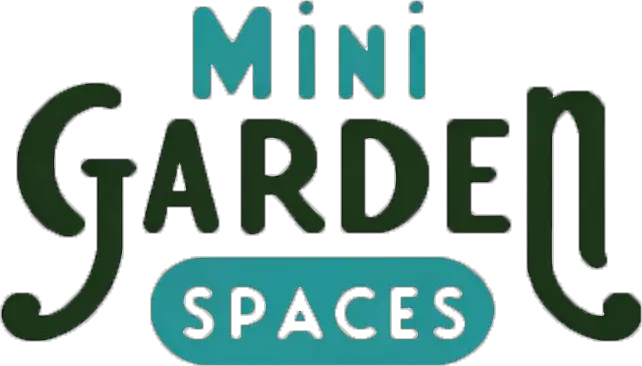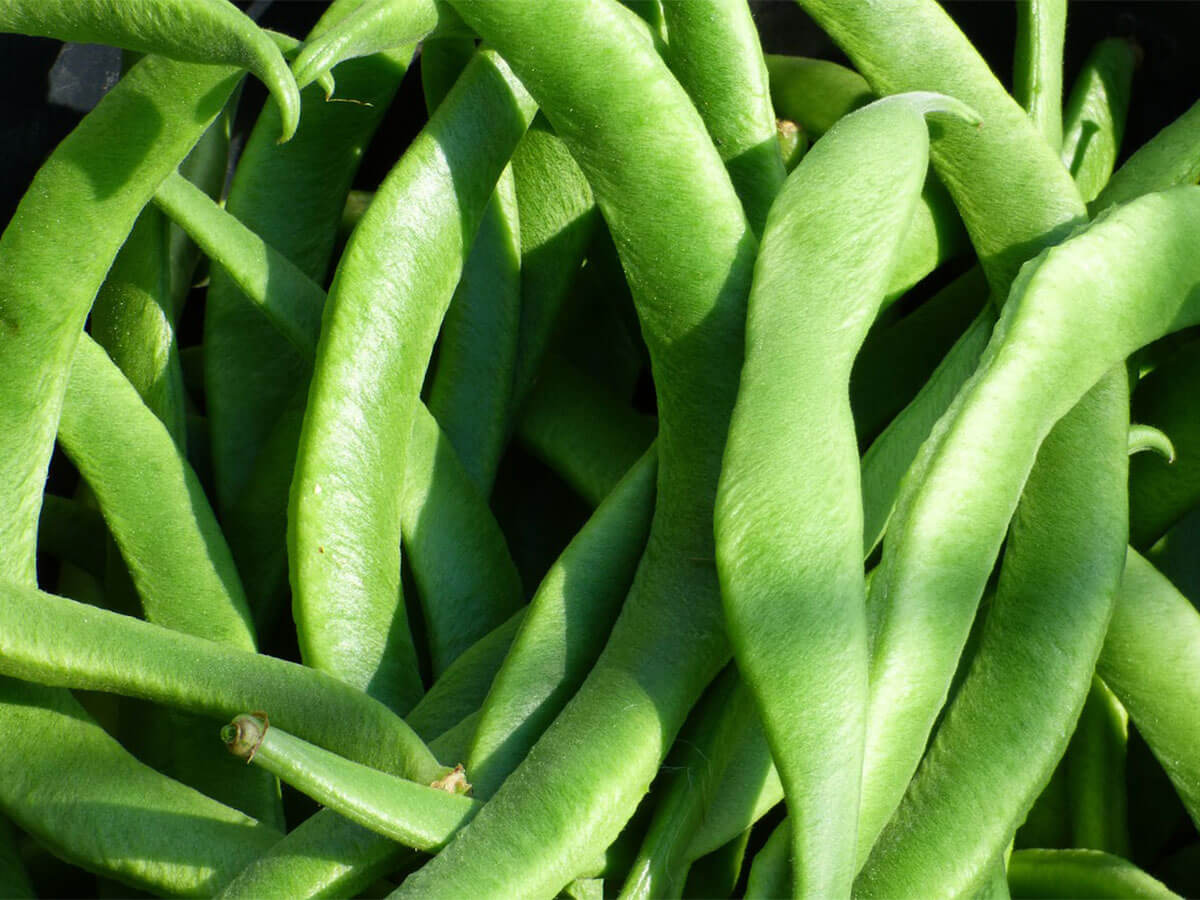8 Best High Yield Vegetables for Small Gardens
April, 2023 |A mini garden space doesn’t have to equal a mini harvest! Creating a vertical vegetable garden is the best way to maximize the use of your space, but choosing high yield vegetables is a great way to maximize the amount of food you can actually harvest.
Whether you have a balcony, porch, or small urban garden, high yield crops will help you get more produce out of your available space.
Disclaimer: This post contains affiliate links. When you make a purchase through one of these links I may earn a commission. This comes at no extra cost to you.
What do we mean by high yield crops?
High yield crops, are fruits, vegetables, or grains that will give you bigger, heavier, and ultimately more valuable harvests with minimal space and effort. Crops like tomatoes and cucumbers are high yielding crops that produce a rewarding amount of produce in a limited amount of space.
Over the centuries, crop plants have been gradually improved by selecting the best-performing, most disease-resistant, and highest yielding varieties. By doing this, we now have amazing fruit and veg varieties that will often outperform any wild plants of the same species.
What are low-yield crops?
Right at the opposite end of the scale, are crops like grains or corn. You can definitely grow grains in small gardens, even on a balcony! But in a small growing space, you’re not really going to get the same value, or yield, from the effort that you put in.
Farmers with large agricultural equipment can make harvesting more efficient. For example, a farmer can cut around 200 acres of wheat in one day! However, in a small garden, you’ll usually only harvest enough grain for one or two recipes. Although we still think growing grain in a small garden is incredibly interesting and fun!
High Yield Crops for a Small Garden
There are a few different angles to look at what makes a certain vegetable high yield. Including…
- how many individual fruits you can harvest (e.g. how many potatoes or cucumbers)
- the length of the harvesting time
- how many people it can feed and the nutrition provided
- the total harvest weight one plant provides
We looked at each of these factors and created our list based on two factors that apply more to small garden spaces…
Vegetable plants that provide the most value by weight and also simply how many harvests you can make in one season!
Which garden vegetable has the highest yield?
The highest yielding vegetable for both quantity, length of harvest, and weight is the pole bean!
However, like all of the plants on this list, the yield can be dependent on the plant’s health and growing conditions (sunlight, container size, etc).
So to help you maximize your yield from these high-producing crops we’ve included tips on how to maximize the yield and also…
- Length of harvest time: How long you can expect to harvest them
- How many plants you can expect to fit in 1 square foot.
- And the average total harvest weight you’d get from that square foot!
1. Tomatoes
With a continuous flush of crops through the summer and into autumn, tomatoes are one of the most popular high-yield vegetable plants to grow. Cherry tomatoes are often the highest yielding, as they grow and ripen quicker than larger varieties. Trellised and caged tomatoes also usually produce more tomatoes.
If you have limited outdoor space, try growing dwarf tomato varieties like Dwarf Champion or Dwarf Beryl Beauty. Dwarf tomatoes produce more compact plants, but will still create impressive harvests!
If floor space is limited, you can also grow trailing tomato varieties up high in wall planters or hanging baskets. And to extend your harvest even further, you could try growing micro tomato varieties on your windowsills too!
How long you can harvest for: Multiple harvests per plant, tomatoes will keep producing flowers and fruits until frosts hit.
Plants per square foot: 1
Average harvest weight per plant: 8-15 lbs
To maximize a tomato yield: Start tomato seeds indoors 5 weeks before your last frost dates to maximize their growing season. When planted, feed them with a specialized tomato plant food and keep them well watered. Add mulch to the top of the container helps to keep moisture in. Towards the end of the season, pinch off any flower buds that are unlikely to ripen in time before the frosts to allow extra energy to go into ripening the remaining tomatoes.

2. Zucchinis
Zucchinis are excellent, easy-to-grow vegetables that always produce a great crop. They’re the vegetable that I’ve shared the most with family and friends as I’m usually harvesting more than I can eat!
And it’s not just zucchinis, summer squashes in general produce a high yield of crops. Climbing summer squash, like the tromboncino (an amazing and unusual squash variety), are a better space-saving alternative
How long you can harvest for: Multiple harvests per plant, zucchini plants can keep producing flowers and fruits into autumn.
Plants per square foot: 0.25! (they ideally need 4ft of ground space or one container where their leaves aren’t cramped by plants in nearby containers)
Average harvest weight per plant: 5-10 lbs (about 15+ zucchinis)
To maximize a zucchini yield:
Start zucchini seeds indoors. Usually, late March, April, or May, depending on how cold your area is and your last frost dates. Make sure you harvest regularly, and don’t let individual fruits become too big, as this takes energy away from making new zucchini. Plus larger zucchinis are generally more bitter.

3. Pak Choi
Also known as Bok Choy or Chinese cabbage, pak choi is a popular ingredient used in Asian cuisine. It’s also one of the quickest growing vegetables on this list, and also one of the highest-yielding!
How long you can harvest for: Multiple harvests per plant (10-14 stalks per plant)
Plants per square foot: 4
Average harvest weight per plant: 2lbs (8lbs per square foot)
To maximize a Pak Choi yield:
It grows best in cooler conditions so start them off early in spring for summer cropping and late summer for autumn cropping.

4. Potatoes
I always find potatoes such a satisfying crop to harvest. It’s always rewarding when you find their golden (or purple!) skins after emptying out a container. Potatoes are an easy-to-grow vegetable, that always produces a great yield in one square foot of space. This 10 gallon grow bag from Amazon is a good, compact, and lightweight planter that makes it easy to harvest your potatoes!
They’re great vegetables to grow in containers with children too, as they’re easy to plant and fun to harvest!
How long you can harvest for: One harvest per plant.
Plants per square foot: 1
Average harvest weight per plant: 1-3 pounds (more from main crop varieties)
To maximize a potato yield:
Part fill a container and plant your seed potato. As the shoots emerge, add more compost to cover the shoots. Do this until your container is full of compost. This makes the roots longer and stronger, leading to more potatoes!

5. Pumpkins
Like tomatoes, pumpkins can be heavy feeders, but they can produce an amazing (and heavy!) crop when grown in optimum conditions.
How long you can harvest for: Several harvests per plant, usually 1-5 pumpkins (more if you choose a mini pumpkin variety)
Plants per square foot: 1 (if you’re growing a pumpkin plant vertically)
Average harvest weight per plant: A standard Jack’o’lantern pumpkin produces an average of 2-3 pumpkins at 15-20lbs. Small Sugar pumpkins average 4-6 fruits per plant at 5-9lbs. And tiny varieties like ‘Jack Be Little’ will produce more pumpkins (8-10), but their smaller size (0.5-1lb) means you don’t gain much else in weight.
To maximize a pumpkin yield:
Make sure you don’t water the leaves of pumpkin plants, get the water right to the base of the plant. This helps water get to exactly where its needed and can reduce powdery mildew on the leaves (caused by hot, wet conditions).

6. Beets
Dwight Schrute really was onto something (The Office reference!). Beetroot is a great high yielding vegetable. It’s also a colorful and healthy addition to so many meals.
How long you can harvest for: One harvest per plant.
Plants per square foot: 9
Average harvest weight per plant: 0.25lbs (2lbs in one square foot)
To maximize a beetroot yield:
Sow seeds in succession to maximize their growing time. In dry conditions beetroot will be smaller and woody, so make sure to water them regularly. Mulching can help to keep moisture around the roots.

7. Cucumbers
Another great vertically growing crop, cucumber plants can produce a great harvest in a relatively small space. Smaller pickling or snack-sized cucumbers will usually produce a higher quantity of cucumbers, and they’ll generally ripen sooner too.
How long you can harvest for: Several harvests per plant, usually 10 cucumbers (25+ if grown in a greenhouse)
Plants per square foot: 1 (if grown vertically)
Average harvest weight per plant: 6-15lbs
To maximize a cucumber yield:
Growing cucumbers in a grow house or mini greenhouse in areas with variable summers can greatly improve the yield. If you live in a cooler area, check out these cold tolerant cucumber varieties to also help you maximize your yield.

8. Pole Beans
You should be able to fit up to 3 pole bean plants into one square foot. With 3 bamboo supports, you can place a plant at the bottom of each and allow them to climb up.
Pole beans can produce an amazing yield of pods, with one plant producing about 10 lbs of long pods. Fresh pole beans can be a tasty and nutritious side dish for plenty of meals. Some of the best pole bean (climbing bean varieties) include runner beans (Phaseolus coccineus) and pinto beans (Phaseolus vulgaris).
How long you can harvest for: Multiple harvests per plant, from summer into autumn.
Plants per square foot: 1-3
Average harvest weight per plant: 10-12lbs
To maximize a pole bean yield:
Keep a close eye on pests. Aphids can be a common problem on beans and will greatly affect the yield. Spray them away with water or physically remove them. Pole beans usually have the best flavor and texture at around 7 inches, so pick them before they get too long and stringy.
If your garden is exposed to high winds, or you don’t have supports, try growing bush bean varieties instead. They are also very high-yielding yet the plants are shorter and more compact.

Can you be self-sufficient in a small garden?
While these crops can produce a big harvest, in small garden spaces, it’s not quite possible to be fully self-sufficient. The recommended land needed for an adult to be self-sufficient (crops only, no animals) for one year is between 0.2-1 acre.
However, no matter your garden size, supplementing your meals with homegrown produce provides several valuable benefits…
- You experience the joy of growing your own and being partially self-sufficient
- It supplements your diet with extra nutrition
- You save money (especially with an efficient and budget friendly vertical garden)
- Your garden will look lush and wonderful all summer long
These crops all produce high yields in weight in size, but there are other crops that can help you generate a good amount of food quickly…
Quick growing crops like radishes and microgreens are a great way to get efficient harvests in small spaces. Sowing these smaller crops in succession plants (sowing once every 1-2 weeks) is a great way to keep your harvests regular.





